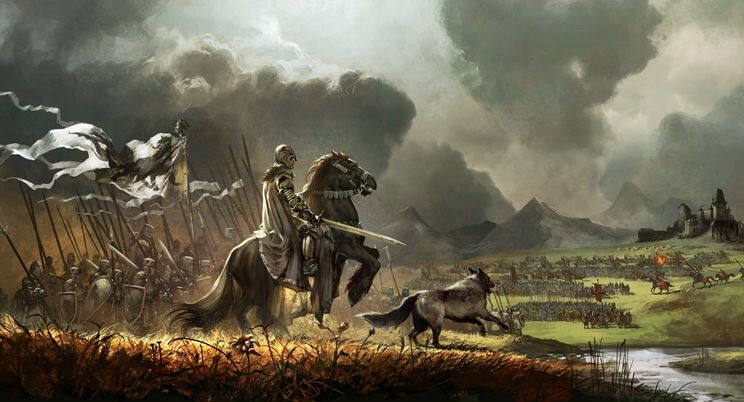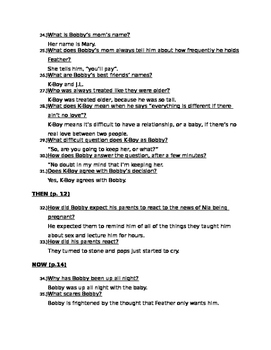The War Of 5 Kings
Previewing the Non-Baratheon Cards of Fury of the Storm
The War of the Five Kings was a large, multi-theatre war fought for control of the Iron Throne.
“Good men and true will fight for Joffrey, wrongly believing him the true king. A northman might even say the same of Robb Stark. But these lords who flocked to my brother's banners knew him for a usurper. They turned their backs on their rightful king for no better reason than dreams of power and glory, and I have marked them for what they are.”
–Stannis Baratheon, A Clash of Kings
Pre-order your own copy of Fury of the Storm at your local retailer or online through our website today!
In the War of the Five Kings, Stannis Baratheon defied the rule of King Joffrey, claiming that the boy was not, in fact, his brother’s son and therefore the Seven Kingdoms were his by right. But more claimants arose across the Seven Kingdoms as his younger brother Renly aligned with the Tyrells, and in the North, both Robb Stark and Balon Greyjoy attempted to secede their lands. Their rivalry threw the realm into chaos and reshaped the Seven Kingdoms into an almost unrecognizable land ruled by fear and fanaticism.
Now, in A Game of Thrones: The Card Game, you have the chance to take control of Westeros’ greatest armies and determine the victor of these titanic clashes to ultimately win glory for your House and ensure that your name lives on in the annals of Westerosi history. But with so many rivals making claims to the throne, who will you support?
Today, we take a closer look at the enemies of House Baratheon in this week’s preview of the Fury of the Stormdeluxe expansion for A Game of Thrones: The Card Game—now available for pre-order at your local retailer or online through our website!
Kings of the South
While Fury of the Storm focuses on the Stags of Storm’s End, every House in A Game of Thrones: The Card Game is represented in this expansion with two new non-loyal cards, as well as a collection of neutral cards that any player can make use of. This deluxe expansion includes three copies each of 52 new cards that explore the King and R’hllor traits and introduce new versions of beloved characters, while also focusing on themes of power with new cards to help any House race to victory.
After the death of Robert Baratheon in A Game of Thrones, the crown fell to his son Joffrey and the Lannisters, who most of the smallfolk in King’s Landing believe to be the rightful rulers. To deal with any who may disagree, the Lannisters gain a new version of the warriorSer Gregor Clegane(Fury of the Storm, 27). This Knight is difficult for any to control, and his loyalty comes with a cost. After you win a challenge in which Ser Gregor Clegane is participating, you must kill a character you control. While you may simply choose to lose low-cost characters to the Mountain’s wrath, you can actually turn this price into an advantage. The sacrifice can be used to help you lay an ambush withBlack Ears(Journey to Oldtown, 29) or to accumulate power with cards likeJoffrey Baratheon(Core Set, 86) orThe Boy King(Called to Arms, 30).
House Lannister is further backed by House Tyrell as the War of the Five Kings continues. At the start of the conflict, Renly Baratheon used the full power of the Reach to make his claim. However, after the Young Stag’s death at the command of his brother, the ambitious Tyrells shifted their alliances. Their willingness to forge alliances the moment it suits them is reflected in cards likeHightower Knight(Fury of the Storm, 37), who can negate his marshalling cost if you kneel another Knight who does not belong to House Tyrell. As the Lannisters and Tyrells feature the most knights in the game, an alliance between the two families is sure to prove profitable for both sides.
Kings of the North
The fractured House Baratheon is not the only family at war with itself in A Song of Ice and Fire. Far to the north, House Greyjoy is torn asunder when Balon Greyjoy mysteriously falls to his death after declaring himself the King of the Isles and the North. Now, for the first time since the Greyjoys first became the ruling family of the Iron Islands, a Kingsmoot will determine the ruler of the Ironborn. This practice is based in the belief thatEvery Captain is a King(Fury of the Storm, 26) on their own ship. For the cost of only two gold, you may play this Event to make each Captain under your control a King as well, giving them access to cards likeKing's Blood(The Brotherhood Without Banners, 108) and allowing you to force your enemies toBend the Knee(House of Thorns, 26) if you forge an alliance with House Baratheon.
While this is not the first card in A Game of Thrones: The Card Game with the power to bestow the King trait, it is the first with the possibility to give you a fleet of them.Asha Greyjoy(Kingsmoot, 51) along with her uncles and rivalsVictarion Greyjoy(Lions of Casterly Rock, 27) andEuron Crow's Eye(Kings of the Isles, 2) all stand to benefit from this card, able to remain standing when they are declared as attackers in power challenges. If you are ready to launch aRelentless Assault(Tyrion’s Chain, 118) with these newfound Kings, you can collect an incredible amount of power in a single turn and give yourself a lead any enemy will struggle to catch.
As the noble families of Westeros tear themselves apart, you will find that loyalty holds few bonds and even those who fight in their wars often do so in the name of ambition rather than honor. For example,Lyn Corbray(Fury of the Storm, 39) desires power as much as any of the lords or ladies of Westeros, seeking to marry Lysa Arryn to gain control over the Vale. In addition to bearing the stealth keyword, this rash Knight also stands whenever an opponent initiates a power challenge against you. While he does not bear a power icon himself, if you equip him with his family’s Valyrian Steel blade,Lady Forlorn(Fury of the Storm, 43), he will be able to defend you against the challenger, with additional strength if you control any neutral locations. When the realm falls into chaos, any may rise to power, and even family names do not matter. All that matters is the Iron Throne.
The Rightful King
A king has no friends, only subjects and enemies. And with enemies cropping up on all sides, it is up to you to decide who you will side your forces with and who you will face on the field of battle. Be careful where you place your trust—even families can be treacherous, and Westeros is unforgiving of mistakes. Forge your alliances, break from the past, and claim the Seven Kingdoms as your own!

Pre-order your copy of Fury of the Storm (GT52) at your local retailer today or online through our website here! This deluxe expansion will hit retailers in Q2 of 2019!
A Game of Thrones: The Card Game Second Edition is the second edition of a beloved Living Card Game®, challenging players to take command of the Houses of Westeros and battle to claim the Iron Throne! By succeeding in military challenges, cunning intrigues, and political encounters, you may have the chance to rule the Seven Kingdoms, but those who fail will fade into ignominy.

(later Henry VII) defeated and killed at on August 22, 1485, bringing the Wars of the Roses to a close. By his marriage to ’s daughter Elizabeth of York in 1486, Henry united the Yorkist and Lancastrian claims. Henry defeated a Yorkist rising supporting the pretender on June 16, 1487, a date that some historians prefer over the traditional 1485 for the termination of the wars. Competing claims to the throne and the beginning of civil warBoth houses claimed the throne through descent from the sons of.
Since the Lancastrians had occupied the throne from 1399, the Yorkists might never have pressed a claim but for the near prevailing in the mid-15th century. After the death of in 1422 the country was subject to the long and factious minority of (August 1422–November 1437), during which the English kingdom was managed by the king’s council, a predominantly aristocratic body. That arrangement, which probably did not accord with Henry V’s last wishes, was not maintained without difficulty. Like before him, Henry VI had powerful relatives eager to grasp after power and to place themselves at the head of factions in the state. The council soon became their battleground. Henry VI, oil painting by an unknown artist; in the National Portrait Gallery, London Courtesy of the National Portrait Gallery, LondonBetween 1450 and 1460, had become the head of a great baronial league, of which the foremost members were his kinsmen, the Nevilles, the Mowbrays, and the Bourchiers.
Among his principal lieutenants was his nephew, a powerful man in his own right, who had hundreds of adherents among the gentry scattered over 20 counties. In 1453, when Henry lapsed into insanity, a powerful baronial clique, backed by Warwick, installed York, as protector of the realm. When Henry recovered in 1455, he reestablished the authority of Margaret’s party, forcing York to take up arms for self-protection.
The first battle of the wars, at (May 22, 1455), resulted in a Yorkist victory and four years of uneasy truce. Get exclusive access to content from our 1768 First Edition with your subscription.A new phase of the civil war began in 1459 when York, goaded by the queen’s undisguised preparations to attack him, rebelled for the last time. The Yorkists were successful at Blore Heath (September 23) but were scattered after a skirmish at Ludford Bridge (October 12). York fled to, and the Lancastrians, in a packed parliament at (November 1459), obtained a judicial condemnation of their opponents and executed those on whom they could lay hands.From then on the struggle was bitter. Both parties laid aside their scruples and struck down their opponents without mercy.
The coldblooded and calculated ferocity that now entered English political life certainly owed something to the political ideas of the Italian, but, arguably, it was also in part a of the lawless habits acquired by the nobility during the.In France Warwick regrouped the Yorkist forces and returned to in June 1460, decisively defeating the Lancastrian forces at Northampton (July 10). York tried to claim the throne but settled for the right to succeed upon the death of Henry. That effectively disinherited Henry’s son, Prince Edward, and caused Queen Margaret to continue her opposition.Gathering forces in northern England, the Lancastrians surprised and killed York at in December and then marched south toward London, defeating Warwick on the way at the Second Battle of St. Albans (February 17, 1461). Meanwhile, York’s eldest son and heir, had defeated a Lancastrian force at (February 2) and marched to relieve London, arriving before Margaret on February 26.
The young duke of York was proclaimed at on March 4. Then Edward, with the remainder of Warwick’s forces, pursued Margaret north to. There, in the bloodiest battle of the war, the Yorkists won a complete victory. Henry, Margaret, and their son fled to. The first phase of the fighting was over, except for the reduction of a few pockets of Lancastrian resistance.
